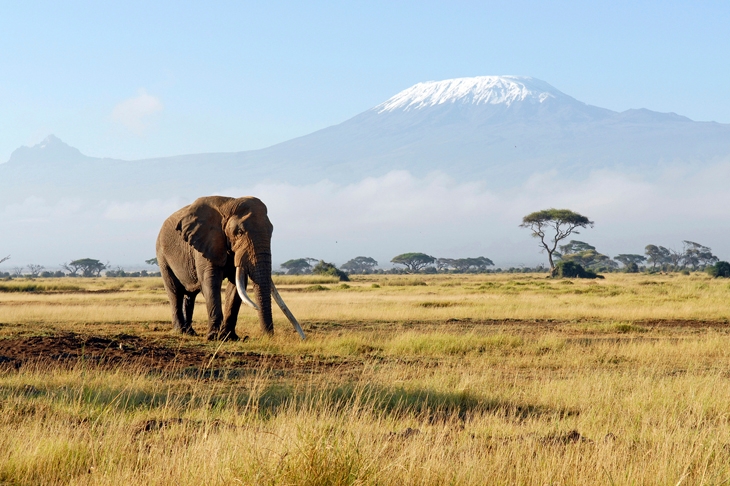Raw, earthy, ear-piercing. It’s hard to decide which was more terrifying and unsettling: the roar of the elephants in Living with Nature on the World Service, or the screaming women and men who we heard letting rip in Garrett Carr’s Radio 4 documentary, The Silence and the Scream. The elephants were recorded by sound engineer Chris Watson, and his producer Sarah Blunt in northern Kenya in the first of their new series in which they use sound as their tour guide and listening as their way of experiencing the landscape. We couldn’t see the golden orb of the sun rising over the miles of flat grasslands peppered with acacia groves and rocky outcrops, but the soundscape created by Watson and Blunt took us there in spirit. It was so vivid, so compelling, the sounds fuelled the imagination. First there was the constant low buzzing of the cicadas, interrupted by shrill bird song, and then at night as the heat eases off, the calls and cries of lions, hyenas and leopards eerily piercing the darkness.
In Kenya, sound is very much a matter of life and death, says Jackson Looseyia, a Masai who still lives on the plains. Sound is a matter of survival to him and his people. It’s through changes in what you can hear around you that you discover whether a predator is on the prowl, far quicker than anything you might see. The changing sounds of the landscape are also tools for the conservationist Saba Douglas-Hamilton. She has been camping out in the wild since she was a child growing up in the Great Rift Valley. One night a lion roared about two feet away from her flimsy, pop-up tent. It was chilling to the bone, says Douglas-Hamilton. ‘So scary, so wonderful and so thrilling all at the same time.’ The lion’s roar is an immensely powerful sound, with an energy that echoes across the plains. It makes you realise how puny you are as a human being.
Surprisingly, it’s the screaming of the elephants as they protest and quarrel with each other that is truly chilling, much more so than the lion’s roar or that almost human-sounding laughter of the hyenas. Elephants have the ability to slide eight octaves in a single scream, says Douglas-Hamilton, a terrifying, penetrating sound. But they also communicate with each other across great distances using sounds that are way below human hearing; deep, growling murmurs that can travel up to ten kilometres. You can’t hear this growling, says Douglas-Hamilton, but you can feel it in your chest cavity.
Her favourite memory is of waking up at two in the morning to see a group of elephants strolling out of the woodland nearby and into the moonlight. One by one they stopped, dropped to their knees, sank on to their bottoms and then rolled to one side and fell asleep. For the rest of that night she dozed to the sound of the slow rhythm of their breathing as they slept. ‘It was magical.’
There was nothing magical about the screaming in The Silence and the Scream (produced by Conor Garrett). The sound was truly unnerving. Garrett Carr travelled to a village on the coast of County Donegal intrigued by the stories of a commune called the Atlantis Foundation that set up home there in the 1970s. A woman called Jenny James bought a large house on the high street overlooking the north Atlantic and gathered round her a group of men and women who were determined to live differently and to find their inner truth through primal scream therapy. Carr wanted to find out how such a noisy, distinct and unconventional group boasting free love, free sex, free will got along with the quiet, discreet, religious-minded people of Burtonport.
Their screaming was recorded on a television film made in 1978 when the group was at its height. It was awful; the sound of humans letting go of all their inhibitions and telling each other exactly what they thought. Too unpleasant to be screened at the time.
‘You can become yourself here,’ James said on a tape-recording that was found later, long after the commune had broken up in the late 1980s. ‘If you live in Atlantis what you’re doing is having moments of the most clear, pure ecstasy, and masses of pain as well.’ She admitted they were ‘a noisy bunch’, but Carr could find no one in the village who would speak out against them. A neighbour even claimed she never heard the screaming.
Only the daughter of a couple who had gone into the commune when she was just a two-month-old baby was prepared to say anything against James. Her mother had been so scared of what was happening to her husband she abandoned her baby and ran away. The daughter now works as a teacher of meditation, using silence as her healing tool. James meanwhile went off to live in Colombia, but sadly we heard nothing more from her in Carr’s programme. Had the screaming worked?






Comments